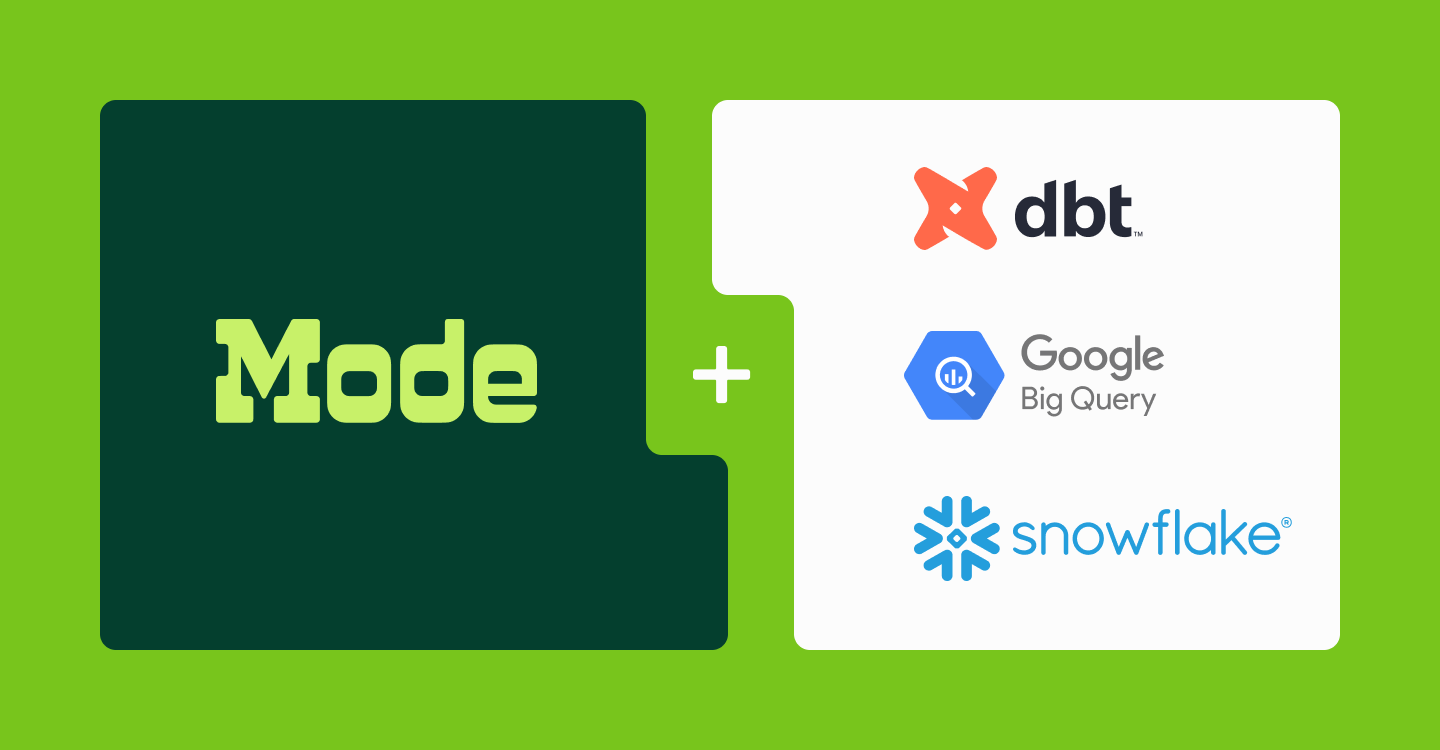Now you can use Mode to analyze data in Apache Hive, Cloudera Impala, Google BigQuery, and HP Vertica!
As more teams get up and running on Mode to analyze data together, we're hearing more requests for connections to a wider variety of databases. Analysts quickly grow accustomed to how Mode saves time and facilitates teamwork—and they want the same benefits when working with their big, unstructured databases. Today we're thrilled to roll out support for BigQuery, Hive, Impala, and Vertica.
On the heels of big workflow upgrades that give analysts more powerful tools to explore data, adding connections to new databases helps further organize a company's entire analytical process in one place.
A Better Way To Analyze Big Data
When analysts wade into unstructured data in Hadoop or other “big data” stores, they're exploring novel topics, validating analysis completed downstream, and developing new datasets to ship into relational databases for analytical use. These tasks require complete flexibility—and because they're time-intensive, discovering and repurposing a teammate's existing work can make long-running projects a lot more efficient.
In today's Hadoop ecosystem, tools like HUE and the command line hinder more than help: they're clunky, require complex setup and maintenance, and make working together impossible. In fact, we recently spoke with a company whose Hadoop workflow requires an analyst to use Terminal to execute queries (fingers-crossed they save the query to a text file somewhere for later use) that then drops results into poorly named CSVs on an impossible-to-navigate shared drive. Talk about a big uphill battle.
A more direct, efficient way for analysts to tackle these tasks is to continue leveraging the flexibility of structured query languages, but in a tool that enables them to share and collaborate. This is where Mode comes in.
Big Radio
TuneIn, a service that offers listeners access to over 100,000 online radio stations, has Amazon Redshift, MySQL, and Impala databases connected to Mode. Before Mode, TuneIn's engineers and analysts spent a considerable amount of time just getting data to the people who needed it. With Mode, the data team has gone from being gatekeepers to enablers, and in doing so has freed up time to shape more data for more analysis—and this means spending more time in Impala.
Director of Software Development Cory Wilkerson says “Mode's new support for Impala has been a boon for our operational, engineering, and analytical staff. We leverage Impala to look at data in a transitional state before we structure it for analysis in Amazon Redshift. Diving into 'raw' data in the same place that we run more traditional analysis helps us more quickly build and ship a comprehensive narrative.”
Connecting Data and the People Who Analyze It
By supporting more databases in response to customer demand, we're moving a step closer to our goal to connect the world's data with the people who analyze it. We're laser-focused on making Mode increasingly useful to more analysts, data scientists, and other departments who run on data. Please continue to let us know how we can make working with data even easier.
To connect your database to Mode, create an account and click “Add Data.” Our handy help docs can be found in the Mode Help Center.





